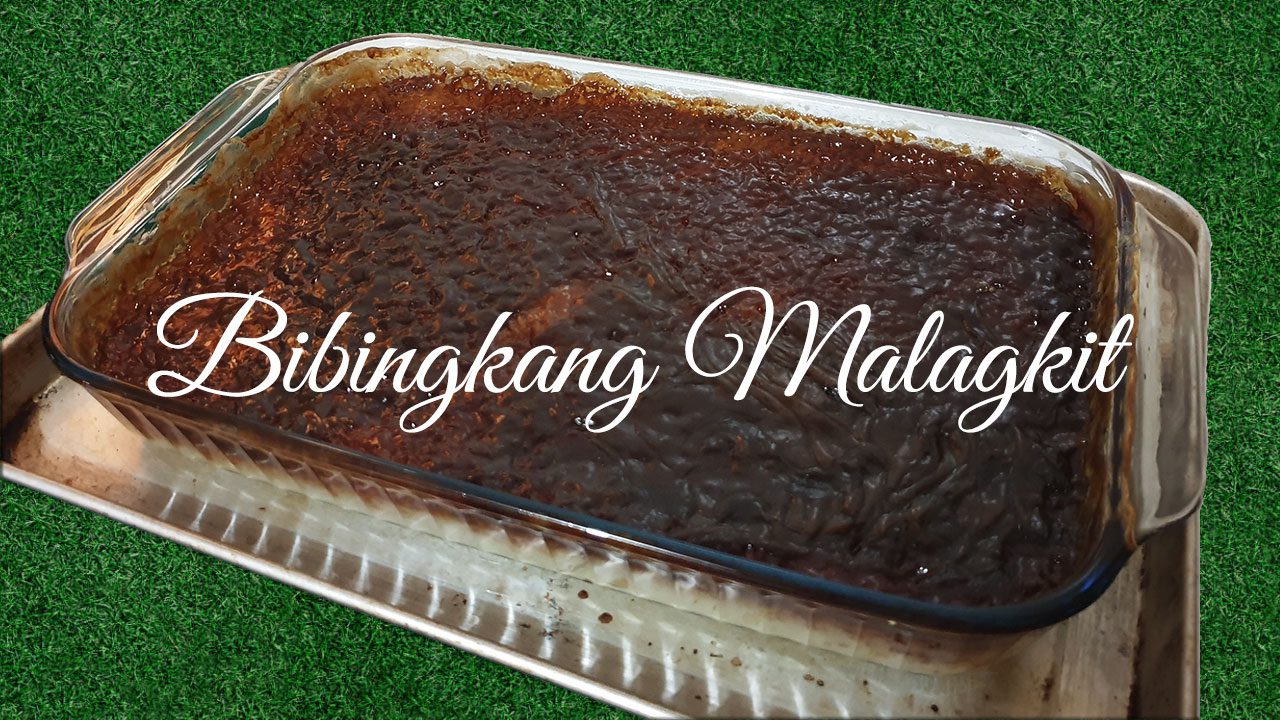Bibingkang malagkit or kumot as my dad used to call it is a rice cake snack that my dad used to love. We would buy a small tray of 8 squares every week. My dad called it kumot because of the layer if coco-caramel on top.
Is it also called biko?
View this post on Instagram
Bibingkang malagkit is also called Biko. The only difference that I can see is that Biko is brown and is often topped with latik instead of coco-caramel sauce. To achieve that brown color, replace the white sugar with brown sugar.
The search is over
Our favorite kakanin seller has not been around since the quarantine and when I ordered from someone on Facebook who makes bibingkang malagkit Facebook I was very disappointed at what I received … it was 10×10, as promised but the rice part was barely a centimeter high and the coco-caramel topping was about as thick. It was so thin that the only way to enjoy it was to roll a slice into a log and THEN eating it. It was a waste of money. Therefore, I decided to try making it myself.
I looked at several recipes online and chose the one I thought I could work with and yet I still made changes because I wanted it to look just like the one dad liked. 🙂
It took quite some time to make and requires a lot of patience but if you keep at it, you will be quite happy with the end result.
Time to cook!
Below is my version of the bibingkang malagkit. I was surprised that it turned out pretty well … exactly the same as the one dad and I used to buy. Yey! Today I had it for dessert with my breakfast.
FYI, I love using a wok for most of my cooking so for this recipe I still used two woks … a big one for the kakanin and a small one for the sauce topping.
Bibingkang Malagkit

rice cake made of glutinous rice, sugar, salt, and coconut cream
- 1 tbsp. butter ((for coating the baking dish))
Kakanin
- 4 cups malagkit rice ((glutinous rice))
- 1000 ml. coconut milk ((gata))
- 1 1/2 cups water
- 1 1/2 cup white sugar
- 1/4 tsps. fine sea salt
Topping
- 200 ml. coconut milk ((gata))
- 1 cup dark brown sugar
Prepping the baking dish
-
Take some butter and lightly coat the inside of the baking dish at the bottom and the sides and set aside.
Preparing the kakanin
-
Place the rice in a bowl then wash and drain it. Place enough water to cover and soak for a few hours … one hour at the very least, overnight at most. Note, that the longer you soak it, the better the rice will cook later.
-
When you are ready to cook, drain the rice and set aside.
-
Place the coconut milk and water in a saucepot, set the heat to medium and simmer.
-
Add the drained rice and stir often to be sure the rice does not burn along the sides of the pot. Continue to cook over medium heat and mixing until the rice has soaked up most of the liquid. Using a large wok makes it easier to mix.
-
Reduce the heat and add the white sugar and salt to the rice mixture and mix. Make sure the sugar and salt are completely mixed into the rice. You will notice that the rice where the sugar gets mixed in becomes shinier so keep mixing gently. This will take around 10 to 15 minutes, more or less.
-
Taste the rice every now and then to make sure it is cooked all the way through. You know you are done when the rice mixture is sticky and clumps but separates from the pot easily.
Preparing the coco-caramel sauce topping
-
Place the remaining 200 ml. coconut milk and the dark brown sugar in a saucepan.
-
Turn on the stove and mix until completely mixed and the sugar is dissolved.
-
Turn off the stove and allow to cool for 2 to 5 minutes.
Putting the dish together
-
Transfer the rice mixture into the buttered baking dish and spread it until it is flat and evenly spread.
-
Pour the sauce over the rice mixture and make sure it covers the rice mixture completely.
Time to bake
-
Heat your oven to 350F. Some say to preheat before you start cooking but, personally, I usually wait until I am actually going to bake because I cannot predict how long the preparation would take and it would be a waste of gas (or electricity).
-
Once it has reached 350F place the prepared tray in the oven and bake for 1 hour. The sauce topping will bubble and thicken.
-
Set aside and allow to cool before serving.
Once your dish has cooled it will look like this:

Enjoy!





